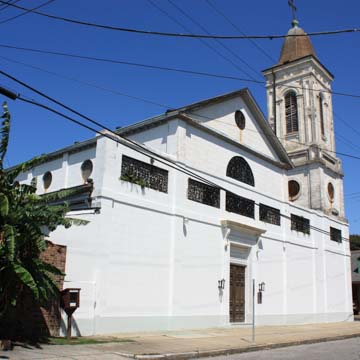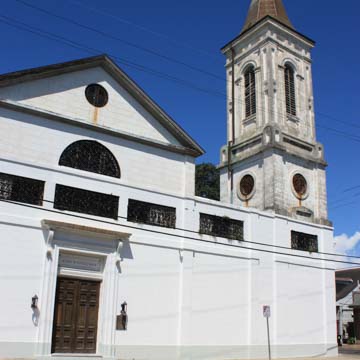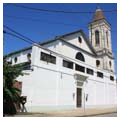Built by Ernest Godchaux and Pierre Vidal to designs of de Pouilly, this building occupies land donated by the Ursuline nuns for a church to honor their patron saint, St. Augustine of Hippo. Bishop Antoine Blanc contributed most of the funds for construction. The facade is quite spare, articulated only by shallow pilasters and, above the central door, a row of narrow rectangular wrought-iron grilles, over which there is a semicircular window and a circular opening in the pediment. These elements, combined with the flat, two-dimensional look of the facade, give the church an austere, abstract appearance that makes it seem almost modern. The asymmetry resulting from the bell tower on one side, added in 1858, reinforces that impression. Inside, Corinthian columns separate the nave from lower side aisles, and small circular windows in the clerestory help illuminate the interior. In a restoration of 1926, Weil and Bendernagel gave the brick exterior a plastered and scored finish. They also installed stained glass windows depicting saints of special significance to the French, which were manufactured in the Munich studio of the Emil Frei Art Glass Company of St. Louis.
When built, the church served a congregation of free people of color and French-speaking whites, with seating along the walls provided for enslaved congregants. In 1842, Henriette Delille, a free woman of color, founded the Sisters of the Holy Family here as the first exclusively African American order of nuns in New Orleans (and one of the first in the nation). The nuns devoted their lives to helping the elderly and the sick and to educating African American children; the Sister’s convent (OR210) is now in New Orleans East.










